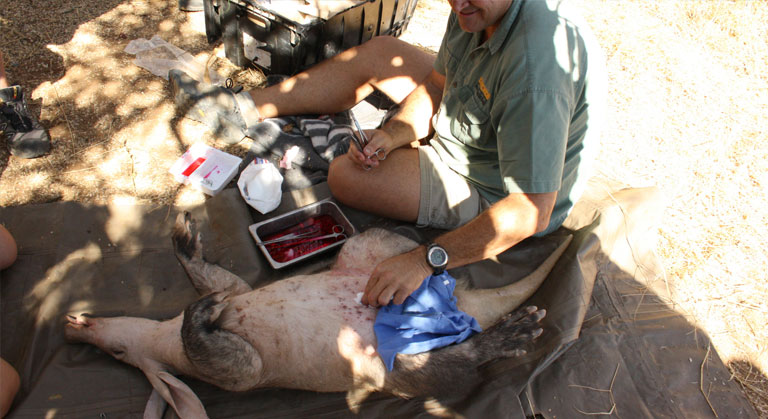
The aardvark, Orycteropus afer, is a nocturnal burrowing mammal native to Africa. It uses its long, pig-like snout to sniff out food, mainly ants and termites, which it digs out using its sharp claws and powerful legs.
Highly intelligent, aardvarks proved a very challenging animal for the Erindi ecology team to capture. Even a cage trap, carefully and quietly placed at the entrance to an aardvark burrow, didn’t work. The aardvark simply dug a new exit from its burrow, successfully avoiding the cage. Aardvarks do, however, move around in the same area regularly during the dark hours to forage, and it was this aspect of their behaviour that the team used to catch one, placing a cage trap in a regular foraging area.
An internal tracking implant was inserted into the abdominal cavity of the creature to allow location and monitoring via VHF telemetry equipment (fitting of VHF collars for aardvarks isn’t appropriate, as the collars may interfere with the animal’s movement in their underground burrows.)
Information captured by the VHF implant includes the time of day seasonally that aardvarks forage, and the species of ants and termites consumed at different times of the year. Aardvark numbers are assessed annually on Erindi to ensure that predators introduced back into Erindi do not cause a population decline.



